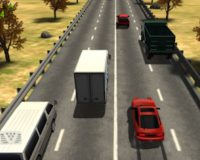
Advertisement
Fnaf Free Roam 2
Fnaf Free Roam 2 builds on the formula introduced in the first game by giving the player greater control over exploration in a larger, more fragmented facility. The map is no longer limited to one central area; instead, it branches into multiple zones, each operating with different system behaviors. This design forces players to balance risk and reward, as each section contains unique hazards and limited visibility. With minimal guidance, the experience becomes about recognizing audio and environmental cues to avoid confrontation with active animatronics that respond dynamically to sound and light.
Navigation Without Boundaries
Unlike earlier entries, this chapter removes the static room-to-room camera system. Instead, players move freely through the environment in real time, making stealth and timing more important than ever. Animatronics can appear in any section and shift behavior depending on the player’s location history. There is no single safe room or checkpoint, which increases tension during long sequences. Locked doors, deactivated elevators, and damaged access terminals are frequent obstacles that require searching for tools and solving local puzzles.
Core Gameplay Mechanics In Fnaf Free Roam 2
Several new systems shape how players survive and interact:
- Light-based tracking: some animatronics only see movement in light
- Noise management: footsteps and door use generate variable sound levels
- Portable scanners: temporary use of environmental maps and heat detection
- Battery-driven devices: flashlights, tasers, and sensors require careful use
- Area modifiers: different zones include environmental effects like fog or static
Each of these mechanics influences how players move, hide, and strategize.
Progression Through Exploration
Progress in Fnaf Free Roam 2 is tied to completing tasks across different facility zones. These include restoring power in blocked areas, collecting audio logs to understand past events, and finding components needed to activate transport systems. The story unfolds gradually as players interact with hidden terminals, malfunctioning interfaces, and damaged robots. Clues are delivered through broken speech fragments, distorted video, and partial system outputs. Unlike previous games, there’s less emphasis on scripted narrative and more on piecing together events through exploration.
The final sections of Fnaf Free Roam 2 take place in a forgotten part of the complex, where systems no longer function as expected. Gravity flickers, lighting shifts at random, and sounds echo with delays. The animatronics in this zone behave with near-human awareness, mimicking past player movements and reacting to hesitation. The ending does not offer a single outcome; instead, it adjusts based on what paths the player took and what areas were left untouched. In the end, escape may not be the only goal—the game suggests the player has been part of a loop far longer than they realized.
















































































